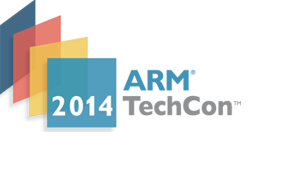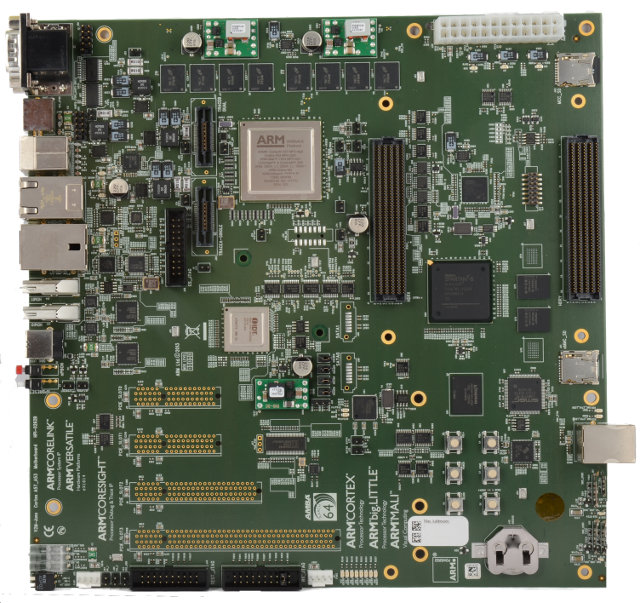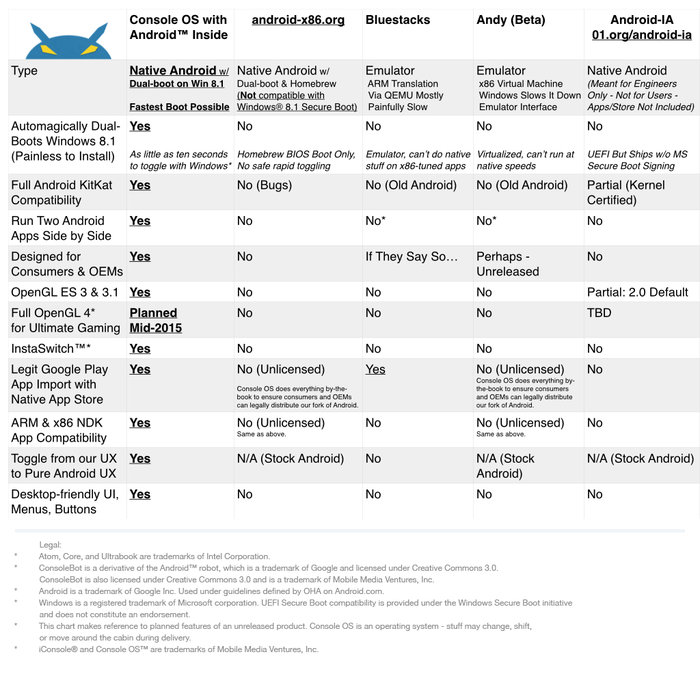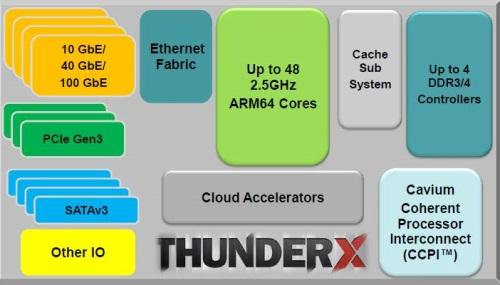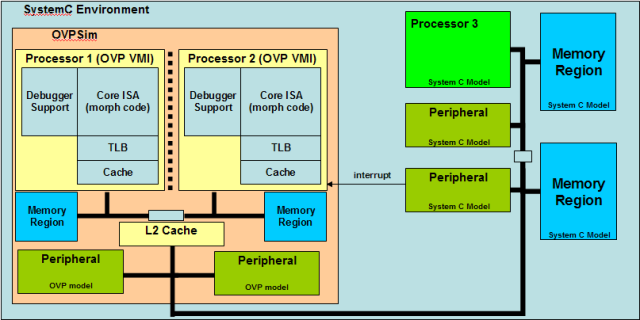ARM Technology Conference (TechCon) 2014 will take place on October 1 – 3, 2014, in Santa Clara, and as every year, there will be a conference with various sessions for suitable engineers and managers, as well as an exposition where companies showcase their latest ARM based products and solutions. The detailed schedule for the conference has just been made available. Last year, there were 90 sessions organized into 15 tracks, but this year, despite received 300 applications, the organizers decided to scale it down a bit, and there will be 75 session in the following 11 tracks: Chip Implementation Debugging Graphics Heterogeneous Compute New Frontiers Power Efficiency Safety and Security Software Development and Optimization Software Optimization for Infrastructure and Cloud System Design Verification There are also some paid workshops that take all day with topics such as “Android (NDK) and ARM overview”, “ARM and the Internet of Things”, or “ARM […]
Linaro Announces 64-bit ARM Android Port on Juno ARM Development Platform
Last week, Linaro 14.06 was released and one of the highlights was Android booting on ARMv8 models, but the organization has actually ported Android to a new 64-bit ARM platform. Juno ARM Development Platform is actually software development platform for ARMv8-A, including Juno Versatile Express board and an ARMv8-A reference software port developed by Linaro. Juno VExpress Board has the following key hardware features: SoC – 2x ARM Cortex A57 cores @ 1.1 GHz (2MB L2 cache), 4x Cortex A53 cores @ 850 MHz (1MB L2 cache) in big.LITTLE configuration with Mali-T624 GPU @ 600 MHz. Compliant with SBSA specifications Level 1. I/O FPGA – Xilinx SPARTAN-6 MCU – ARM Cortex M3 for Motherboard Configuration Controller (MCC) System Memory – 8GB DDR3L @ 1600 MHz Storage – User and configuration micro SD card lots, 64MB NOR flash, configuration EEPROM Connectivity – 10/100M Ethernet + 10M “configuration” Ethernet Video Output – […]
64-bit ARM Server Motherboards by SoftIron
We’ve already seen development board such as X-Gene XC-1, and 64-bit ARM servers have been demonstrated by Dell and HP, but SoftIron, a British startup, claims to be the first to provide a production ready ARMv8 solutions for the enterprise server market (e.g. data centers), with its SoftIron 64-0400 and 64-0800 server motherboards powered by Applied Micro X-Gene quad and octa SoC. Although the company did not release complete pictures of the board, they seem to have done a better job with specifications: SoC SoftIron 64-0400 – Applied Micro X-Gene APM883204 with 4x 64-bit ARMv8 cores @ 2.4 GHz, 4x 32-bit ARMv5 cores for Network/Security offloads and Acceleration, and 1x Cortex M3 for server management SoftIron 64-0800 – Applied Micro X-Gene APM883208 with 8x 64-bit ARMv8 cores @ 2.4 GHz, 4x 32-bit ARMv5 cores for Network/Security offloads and Acceleration, and 1x Cortex M3 for server management System Memory – Up […]
Console OS Aims to Run Android Alongside Windows on Intel based PCs, Laptops and Tablets (Crowdfunding)
There are already various solutions to run Android on Windows PC powered by Intel processors either going the emulator route, for example with BlueStacks or AndroVM (now Genimotion), or the native route with solutions such as Android-x86. So when I read Console OS, a port of Android capable of running along side of Windows, was looking for funds on Kickstarter to complete the project, I was perplex. But looking into details, it seems Console OS may indeed bring improvements to existing solutions, and Mobile Media Ventures, the company behind the project, released the following table comparing Console OS to other Android ports. If like me you had never heard of Andy Android, here’s the link to the project. Android IA is Intel ports of Android, which currently targets developers. So according to the developers, Console OS makes installing and dual-booting Android on a Windows PC easy, brings full Android Kitkat […]
QNAP TS-x51 NAS Supports Up to 16 Drives, On-the fly HD Video Transcoding, HDMI Output, Virtualization and More
QNAP has introduced their latest TS-x51 NAS family at Computex 2014 with four NAS supporting between 2 to 8 drives, expandable to a total of 16 drives via expansion enclosures. The storage devices powered by an Intel Celeron J1800 dual core processor boast video transcoding capability that’s 18 times faster than earlier Atom based solutions, feature an HDMI port, and support virtualization to allow you to run two operating systems such as Linux and Windows 8. QNAP TS-x51 specifications: SoC – Intel Celeron J1800 dual core processor @ 2.41 GHz (burst frequency: 2.58) with Intel HD graphics System Memory – 1GB SO-DIMM DDR3L-1333 or 4GB SO-DIMM DDR3L-1333 (Each model listed above has 1GB or 4GB RAM options), expandable to 8GB RAM via a second RAM slot Storage 512 MB flash (DOM – Disk On Module) Hot swappable 2.5″ or 3.5″ SATA drives @ 6Gb/s, 3Gb/s. Expansion enclosures – UX-800P, or UX-500P RAID […]
Cavium ThunderX Server SoC Features up to 48 ARM 64-bit Cores
ARM SBSA specification for server supports up to 268,435,456 CPU cores for the second level of standardization on one or a combination of SoCs. We’re not quite up there just yet, but Cavium ThunderX is an ARM server SoC with up to 48 cores on a single chip, which is the highest number of cores I’ve ever heard of in an ARM SoC. The company created their own custom processor cores using an ARMv8 architecture license, designing an SoC complies with ARM’s Server Base System Architecture (SBSA) standard with the following key features: ARM based SoC that scales up from 8 to 48 cores with up to 2.5 GHz core frequency with 78K I-Cache, 32K D-Cache, and 16MB L2 cache. Fully cache coherent across dual sockets using Cavium Coherent Processor Interconnect (CCPI) Integrated I/O capacity with 100s of Gigabits of I/O bandwidth 4x DDR3/4 72-bit memory controllers supporting up to 1TB RAM […]
Prpl Non-Profit Organization to Work on Linux, Android, and OpenWRT for MIPS based Processors
In what looks like an answer, albeit fairly late, to Linaro, the non-profit organization working on open source software for ARM based SoCs, a consortium of companies composed of Imagination Technologies, Broadcom, Cavium, Lantiq, Qualcomm, Ingenic, and a few others, has funded Prpl (pronounced Purple), “an open-source, community-driven, collaborative, non-profit foundation targeting and supporting the MIPS architecture—and open to others—with a focus on enabling next-generation datacenter-to-device portable software and virtualized architectures”. The Prpl foundation will focus on three key objectives: Portability – To create ISA agnostic software for rapid deployment across multiple architecture Virtualization & security – To enable multi-tenant, secure, software, environments in datacenter, networking & storage, home, mobile and embedded Heterogeneous Computing – To leverage compute resources enabling next generation big data analytics and mining Initially there will PEG (Prpl Engineering Group) to take of the following projects for 4 market segments (datacenter, network & storage, connected consumers, […]
Imperas Releases ARM Cortex A53 & A57 Open Source Models for OVPsim
Since the end of 2012, it has been possible to use ARM 64-bit Fast models to run code compiled for the new ARMv8 architecture by emulating a 64-bit ARM processor inside an Intel / AMD processor. ARM fast models are not the only “free” option anymore, as Imperas has released OVPsim 20140430 with open source models for ARM Cortex A53 and Cortex A57 cores. OVPsim is a virtual platform that’s available free of charge for personal usage. The simulator itself (OVPsim) is closed source, but processor, peripheral and platform models are released under the Apache License version 2.0. OVP models of the ARM Cortex-A53 and Cortex-A57 are fully instruction accurate models, and you can use them for personal with an additional free license key, but if you want to make use of advanced features such as TrustZone and hardware virtualization you’ll need to purchase a commercial version (Imperas Developer or […]


